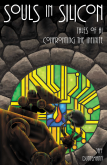In a box on the floor of my walk-in closet are all the vinyl LPs Carol and I decided to keep. Some few we now have on CD or MP3; most are obscure, with just a few in the middle. Somewhere in there is a Steeleye Span LP I very much enjoyed, Now We Are Six. It’s almost entirely “traditional” material, indicating folk songs going (often) waythehell back. However, Steeleye Span recorded them using modern-day rock instrumentation, and I was surprised back in the ‘80s at how seamlessly the combo worked.
Well, one of those traditional songs popped into my head the other day, as music from my past often does. The song is “Seven Hundred Elves,” and you can catch it on YouTube if you like that sort of thing. It’s fluky enough to expand on a little. This flukiness was apparent to me way back in 1984.
The song is a ballad (lyrics here, on Mudcat) about a farmer who strikes out into the west (of what land we aren’t told) to find a place to build his farm. He brings his hawk and his hound, and evidently some big axes and serious muscle. He starts cutting down trees and eating the deer, and eventually word gets back to the elves. So the elves descend on the farmer’s house to make their preferences known. The farmer, knowing that creatures like elves are non-Christian, sets up crosses all over his little farmhouse, and the elves run screaming in all directions.
Farmer 1, elves 0.
Now, for the flukiness:
All the elves from out the wood began to dance and spring
And marched towards the farmer’s house, their lengthy tails to swing.
Huh? Ok, I’m no expert on folklore. But if you’re going to write fantasy, you have to read it. I’ve read quite a bit, and never once have I seen mention of elves with tails. Lengthy tails, at that. And even if said elves were on the small size, seven hundred of them would be piled up twenty deep around the house.
I’m pretty sure they aren’t elves. My guess is that they’re…monkeys.
I’ve read that over in India (I think) hordes of monkeys sometimes descend on villages and become serious nuisances. Lengthy tails swinging? Sure. Foul and grim? Well, what do monkeys throw at each other?
There is some evidence that the song is an adaptation of an old Danish ballad. The Danish version speaks of trolls, not elves. And I think trolls are even less likely to have lengthy tails than elves. Alas, I don’t think Denmark ever had native monkeys in their ecosphere. But suppose, just suppose, that the story ultimately came to the Danes from south Asia, where monkeys are native? That would work.
Which brings me to the point of this morning’s wander, an insight I had back in 1984: Could mythical creatures like elves and dwarves and pixies and so on be ancestral memories of now-extinct hominids? (Yeah, I know, monkeys are not hominids. I’m broadening the concept here.) Homo floresiensis were only 3’6” tall. We don’t know how tall the Denisovians were from a couple of bones and a few teeth. In general, our hominid forerunners were smaller than we are. Even the Neanderthals were short, if wide and probably mondo muscular. I could see them inspiring dwarves, if not elves.
And who knows what hominids and monkeys and other primates we’ve not yet found fossils for? The Homo floresiensis fossils weren’t discovered until 2003, Denisovians until 2010. Maybe there were cold-weather monkeys. The Denisovians lived (among other places) in Siberia.
Quick aside: Tolkien didn’t invent the word “hobbit.” There are some old 19th century booklets called The Denham Tracts listing all kinds of mythical creatures, including hobbits. The whole list is there on Wikipedia, with most having their own Wiki pages. If you’re tired of writing stories about elves and dwarves, well, you’ve got a lot more to choose from.
Again, my point here is that ancient tales handed down for thousands of years could well be inspired by long-extinct primates, most of which we have no evidence for. As for what inspired mythical giants, well, given how short other hominids were, dare I suggest…us?
I so dare. And I will dare until we find some (provably genuine) 8-foot-tall hominid skeletons.
As we used to say in the ‘60s: Crazy world, ain’t it?











